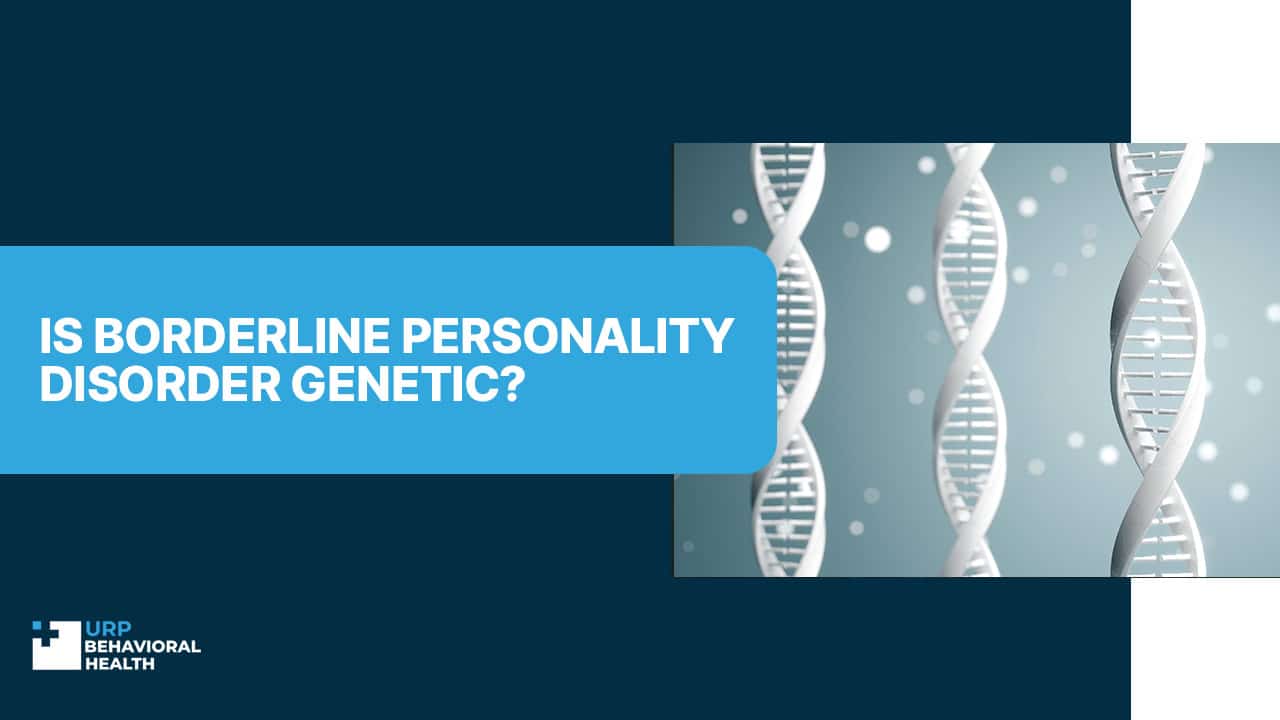
Is Borderline Personality Disorder Genetic?
It is a mental disorder that is still quite enigmatic and one that is diagnosed in a vast number of individuals across the globe. It is marked by all-round mood swings, unstable interpersonal relationships, and disturbance with the self-concept. The sufferers of this disease are vulnerable to deep-seated feelings of pain beyond their ability to comprehend or regulate. This disorder presents numerous difficult tasks for the affected people, as well as for their family members [5].
What Is Borderline Personality Disorder?
This is a mental illness, which is narrowly defined by instability in interpersonal relationships, one’s mood swings, and one’s identity. Many of them, therefore, undergo moments of rage, hysteria, euphoria, and despair in regularity and severity. This emotional instability is observed leading to those involved exercising impulsive behavior, breaking relationships, or even self-harm. Main characteristics of borderline personality disorder:
- Emotional instability. Episodic episodes of abnormally elevated or depressed mood appear to be unprovoked.
- Unstable relationships. Becoming impatient, switching between loving and neglecting the loved ones, hence, having intense but short-lived relationships.
- Identity problems. Instability of personal identity in which their inner self changes quite often besides experiencing a void in their lives.
- Increased rate of taking impulsive actions, which may be maladaptive; for example, use of drugs or alcohol, or self-mutilation.
Contact our admissions team now to begin your path toward a brighter future.
The antecedent of Borderline Personality Disorder is multifactorial and diverse. Possessing a biological influence is unlike other earlier theories that posited that the disorder is due to childhood abuse and neglect. This has given an insight into the disorder and a new dimension to the management of the same [6].
Is Borderline Personality Disorder Inherited?
For years, the possibility of Borderline PD heritability has remained a topic of scientific interest. Different research has also indicated that there is a strong tendency that if one of the family members has a BPD, then other members of the same family are more likely to develop BPD. This to an extent implies that there may be a genetic component to BPD that can be linked to one’s line-age. However, it is necessary to underline that BPD hereditary is a factor that can contribute only partially to the development of this type of disorder. Important studies and findings:
- Familial clustering. First-degree relatives of participants with BPD have a higher likelihood of experiencing the disorder to be genetic in their lifespan. Several of the researches have indicated that the incidence of BPD in first-degree relatives is between five to ten times higher than in the general community.
- Twin studies. Research done on persons with identical twins has revealed that probands with such twins have an increased rate of BPD than co-twins or twins with opposite sex. This suggests that there is a BPD genetic factor involved.
- Genetic predisposition. This is because experts estimate that 40 to 60 % of the risk of BPD is likely to be hereditary. Equally influential, therefore, are environmental causes, including upbringing and life experiences that one undergoes while in this world [2].
Borderline Personality Disorder and Genetics
Now researchers are concentrating on such particular genetic factors that are linked with the elevation of BPD risk. Of particular interest are genes involved in the functional regulation of neurotransmitters such as serotonin and dopamine. Relevant genetic factors:
- Serotonin transporter gene (5-HTT). This gene which modulates the serotonin levels in the brain provokes the organism’s increased vulnerability to experiencing fluctuations in mood and loudness of impulsive reactions. Serotonin is a neurotransmitter that has a great influence on affective, anxious, and aggressive behaviors.
- Dopamine receptor gene (DRD4). Dopamine is also one of the neurotransmitters which is involved in reward and pleasure. Possibly the alterations in the dopamine system explain why patients with BPD behave impulsively and readily engage in risk-taking behaviors.
- Gene-environment interactions. Alone cannot explain the development of BPD, but it is widely agreed that factors that can borderline personality are important in the development of BPD. As for the other nonspecific factors, important causes include environmental ones, for instance, childhood trauma, abuse, and neglect. Such actions can ‘switch on’ or “switch off” particular genes in embryonic development, which raises vulnerability to BPD [3].
We’ll help you understand your options and guide you toward care.
Other Relevant Aspects of Genetics in BPH
At the same time, it is crucial to understand the meaning of a new concept called “epigenetics”. The science that looks into how environmental stimuli affect gene expression, but not the genes themselves. This means that in as much as there are genes associated with BPH, it is environmental factors that can either activate these genes leading to disease or not. Key areas of epigenetic research:
- Stress response. Child adversity e.g. abuse or neglect may lead to epigenetic alteration that enhances the risk for BPD development.
- Parental care. Epigenetic protective effects of care and support in childhood indicate that people can have BPD and be genetically protected from such a disorder if they receive proper care as kids.
- Therapeutic interventions. Anticipating the future it is also being researched how practices like DBT can impact epigenetic processes and result in the lasting amelioration of the symptoms [4].
Conclusion
The principal component of BPD is a multi-faceted condition, which has both a genetic and an environmental link. Although it is widely accepted that there are certain heightened tendencies called for genetic preconditions to BPD, it should be understood that they are not the direct cause of the disease. Relatively, it is crucial to stress that even if a child is born with the genes that make him prone to the disorder’s development, it does not mean that he is doomed to get it. The pattern of the disorder hereditary is greatly influenced by the environmental context, individuals’ experiences, and the amount of social support they receive [1].
Reach out today and let us create a treatment plan designed around your needs.
References:
- gov. Hereditary syndrome. National Cancer Institute. Retrieved from https://www.cancer.gov/publications/dictionaries/cancer-terms/def/hereditary-syndrome
- National Center for Biotechnology Information (NCBI). Family study of borderline personality disorder: Evidence for shared environmental effects. PMC. Retrieved from https://www.ncbi.nlm.nih.gov/pmc/articles/PMC2789483/
- National Center for Biotechnology Information (NCBI). Genetics and epigenetics of borderline personality disorder. PMC. Retrieved from https://www.ncbi.nlm.nih.gov/pmc/articles/PMC10505449/
- National Center for Biotechnology Information (NCBI). Genetic influences on borderline personality disorder and the underlying traits. PMC. Retrieved from https://www.ncbi.nlm.nih.gov/pmc/articles/PMC5705825/
- National Health Service (NHS). Causes of borderline personality disorder. Retrieved from https://www.nhs.uk/mental-health/conditions/borderline-personality-disorder/causes/
- National Institute of Mental Health (NIMH). Borderline personality disorder. Retrieved from https://www.nimh.nih.gov/health/topics/borderline-personality-disorder
















